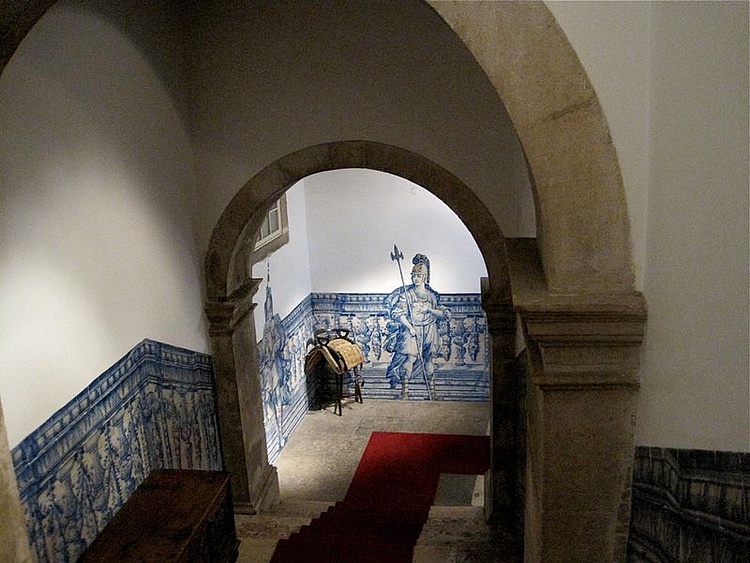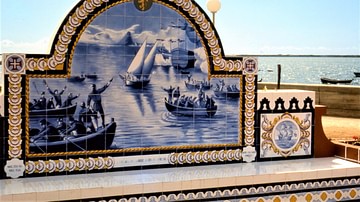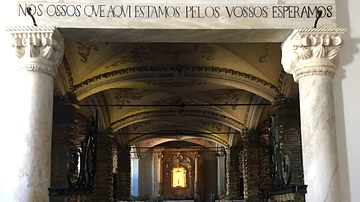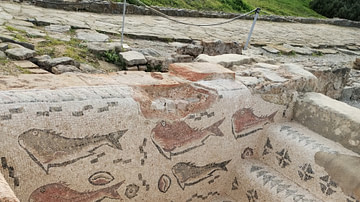Illustration
The Baroque (c. 1600-1750 CE) and Rococo (c. 1700-1800) movements led to a style of azulejos (glazed ceramic tile) that is unique to Portugal – figuras de convite or invitation figures. These were ornate life-size figures, usually a finely dressed nobleman or woman and they were fixed to the walls of stairways and at entrances to palaces to welcome or invite guests inside. Photo taken in 2012 CE.
Cite This Work
APA Style
alm, r. (2019, September 28). Invitation Figure. World History Encyclopedia. Retrieved from https://www.worldhistory.org/image/11288/invitation-figure/
Chicago Style
alm, ralmonline. "Invitation Figure." World History Encyclopedia. Last modified September 28, 2019. https://www.worldhistory.org/image/11288/invitation-figure/.
MLA Style
alm, ralmonline. "Invitation Figure." World History Encyclopedia. World History Encyclopedia, 28 Sep 2019, https://www.worldhistory.org/image/11288/invitation-figure/. Web. 17 Jul 2025.







